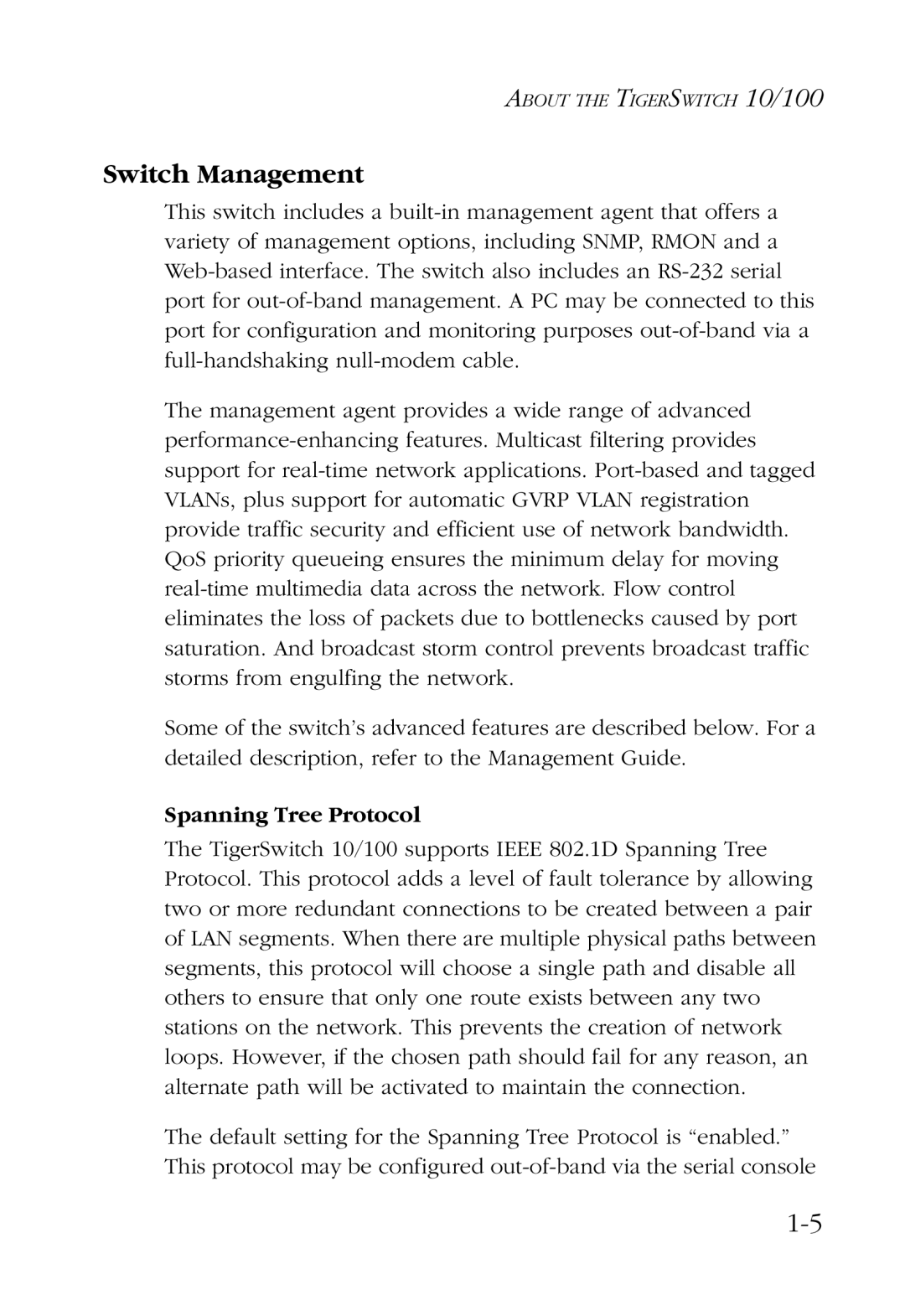ABOUT THE TIGERSWITCH 10/100
Switch Management
This switch includes a
The management agent provides a wide range of advanced
Some of the switch’s advanced features are described below. For a detailed description, refer to the Management Guide.
Spanning Tree Protocol
The TigerSwitch 10/100 supports IEEE 802.1D Spanning Tree Protocol. This protocol adds a level of fault tolerance by allowing two or more redundant connections to be created between a pair of LAN segments. When there are multiple physical paths between segments, this protocol will choose a single path and disable all others to ensure that only one route exists between any two stations on the network. This prevents the creation of network loops. However, if the chosen path should fail for any reason, an alternate path will be activated to maintain the connection.
The default setting for the Spanning Tree Protocol is “enabled.” This protocol may be configured
